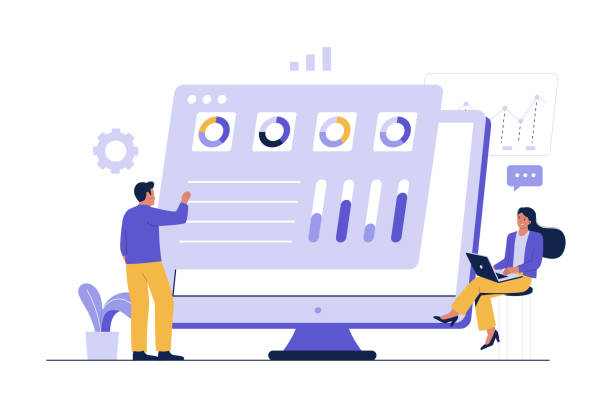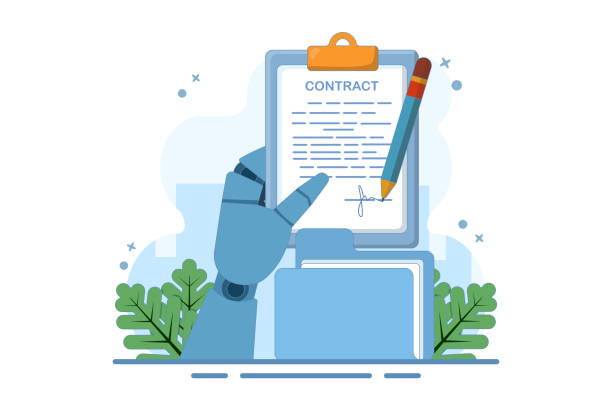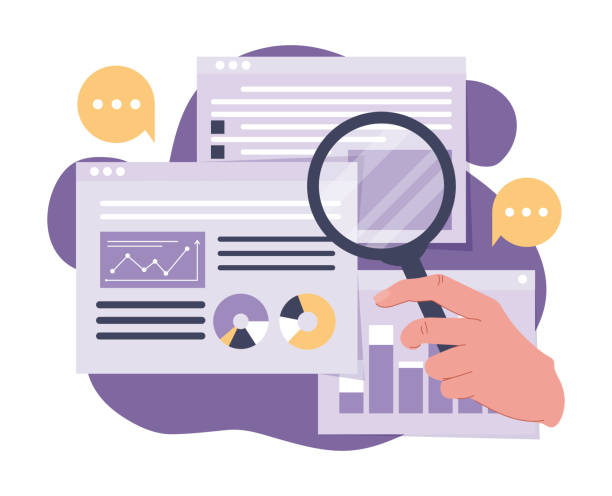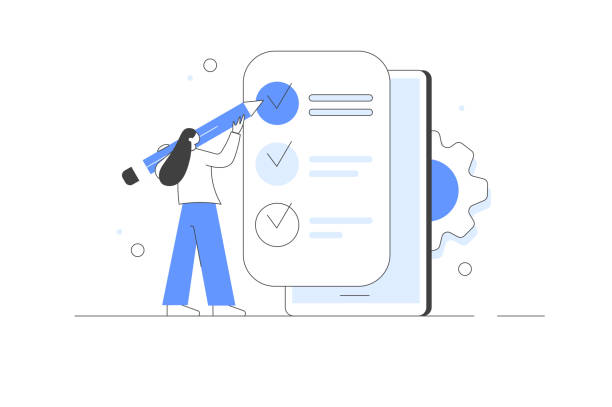An Introduction to the Importance of Business Globalization

In today’s world, where geographical boundaries have become meaningless due to the internet, global business expansion is no longer an option, but a competitive necessity.
For any company that dreams of accessing new markets and attracting international customers, having a website only in their native language is a serious obstacle.
This is where the importance of **multilingual website design** reveals itself.
Creating a multilingual website allows you to convey your message and products to millions of people around the world, regardless of their native language.
This action not only helps increase access to **global markets** but also presents your business as a global and forward-thinking brand.
Understanding this paradigm shift is the first step towards international success.
In the rest of this article, we will **explain** and **guide** you through various aspects of this vital topic, familiarizing you with the challenges and opportunities ahead.
This is an investment whose returns can be beyond imagination, opening a new door to unprecedented successes.
Falling behind in the competition with large online stores?
Rasaweb makes your business online and increases your market share with professional e-commerce website design!
✅ Increased brand credibility and customer trust
✅ Easy shopping experience leading to more sales
⚡ For free website design consultation, act now!
Innumerable Benefits of Multilingual Website Design

Implementing a website with the ability to display in different languages is more than just a cosmetic change; it’s a powerful strategy for business growth and development.
One of the most important benefits is a significant increase in organic traffic.
By optimizing for search engines in various languages, you can attract audiences who previously did not have access to your content.
This directly impacts the improvement of user experience (UX); as users will be able to receive information in their own language, leading to a greater sense of trust and comfort.
Increasing brand credibility and customer trust is another significant achievement.
A multilingual website demonstrates your respect for cultural diversity and willingness to serve a broader audience.
This can create a strong competitive advantage, as many competitors have not yet reached this stage.
Ultimately, all these benefits lead to higher conversion rates, as users interact with your content more easily and confidently and convert into customers.
This is an **analytical** and **specialized** approach to understanding the true potential of multilingual websites.
Key Technical Considerations in Multilingual Site Implementation

When you decide to design a multilingual site, there are numerous technical aspects that must be carefully considered to ensure proper functioning and optimization for search engines.
One of the first and most important decisions is choosing the appropriate URL structure.
You can use subdomains (e.g., fr.example.com), subdirectories (e.g., example.com/fr/), or country code top-level domains (ccTLDs) (e.g., example.fr).
Each has its own advantages and disadvantages, and the choice depends on your overall strategy.
Another critical point is the correct use of Hreflang tags.
These tags help search engines like Google display the correct language version of a page to users in different regions and prevent duplicate content issues.
Incorrect use of Hreflang can harm your site’s SEO ranking.
Also, checking server location and using Content Delivery Networks (CDNs) is very important for improving site loading speed in different parts of the world.
These **specialized** and **guidance** technical considerations form the foundation of a successful multilingual site.
In the table below, you can see a comparison of common URL structures:
| Structure | Example | Advantages | Disadvantages |
|---|---|---|---|
| Subdirectory | example.com/fr/ | Easier SEO management, preserves main domain authority. | May be less intuitive for some users. |
| Subdomain | fr.example.com | Clear separation of languages, stronger regional identity. | Requires separate SEO management, search engines may see them as separate sites. |
| ccTLD (Country-code domains) | example.fr | High local trust, strong geo-targeting. | Costly, requires managing multiple domains, limitations in accessing some TLDs. |
Search Engine Optimization (SEO) for Multilingual Sites

The success of a multilingual website heavily depends on its multilingual SEO strategy.
Beyond simple content translation, you must ensure that your site is understandable and optimized for search engines in each language.
The first step is to conduct keyword research in different languages.
This does not mean merely translating primary keywords but finding common and localized search terms in each specific language that your target users employ.
This **educational** approach ensures that you are aligned with what the audience is searching for.
One of the most crucial elements of multilingual SEO is the correct use and precise implementation of Hreflang tags.
These tags inform search engines which language or regional version of a page is most suitable for users in a specific region, preventing duplicate content issues.
Additionally, optimizing title tags and meta descriptions for each language version, considering local keywords and cultural appeal, is of high importance.
Ensuring a logical and understandable URL structure for each language is also essential.
Disregarding these **specialized** details can lead to a decrease in your site’s visibility in search results, even if you have excellent content.
This is a long-term investment in the global success of your website.
Are you losing customers because of your e-commerce site’s outdated appearance or slow speed? Rasaweb’s expert team solves these problems with professional e-commerce website design!
✅ Increased customer trust and brand credibility
✅ Blazing fast speed and excellent user experience
Get a free consultation with Rasaweb right now ⚡
Challenges of Content Translation and Localization

Content translation for a multilingual website design goes far beyond merely converting words from one language to another.
The main challenge lies in the concept of “Localization.”
Localization means adapting content to the culture, values, customs, and even humor of local audiences.
For instance, a joke or a cultural reference that is very common in one country might be completely meaningless or even offensive in another.
This raises a **questionable content** issue for many businesses: Are online translation machines sufficient? The emphatic answer is “No.”
Using professional and native translators, who have a deep understanding of the target culture and language, is essential.
They can ensure that your message is not only translated correctly but is also culturally appropriate and resonates with the audience.
Elements such as date and time formats, currency units, units of measurement, and even colors and images must be localized.
A poor translation or inappropriate localization can damage your brand’s credibility and lead to a lack of user trust.
This part of the localization process requires care and appropriate investment to ensure that your website truly speaks to your global audience.
User Experience (UX) in International Website Design

User experience (UX) plays a pivotal role in the success of any website, but its importance is doubled in multilingual website design.
Good UX ensures that users of any language can easily navigate your site and find the information they need.
One of the most important principles is having a clear and accessible option to change the language.
This option should be placed in a prominent location (usually the header or footer) and with a familiar icon (such as a flag or language code).
Furthermore, maintaining navigation consistency across different language versions is very important.
Users should be able to expect that links and menu structure remain similar across all languages.
Responsive Design is also crucial for multilingual sites, as users utilize various devices with different screen sizes.
Additionally, cultural differences in user interface design must be considered; for example, text reading direction (right-to-left or left-to-right), the meaning of colors, and even page element layout.
Conducting user tests with native speakers of each language helps you identify weaknesses and optimize the user experience.
This **specialized** and **explanatory** approach is key to converting visitors into loyal customers.
Common Tools and Platforms for Building Multilingual Websites

Fortunately, today there are various tools and platforms available to facilitate multilingual website design, making the process much easier for developers and website managers.
The choice of the right tool depends on the type of website, budget, and your technical skills.
One of the most popular options for WordPress-based websites are plugins like WPML (WordPress Multilingual Plugin) and Polylang.
These plugins enable the translation of content, themes, plugins, and even URLs, and are compatible with many other templates and plugins.
For larger Content Management Systems (CMS) like Joomla and Drupal, multilingual capabilities are offered either natively or through powerful extensions.
In addition, e-commerce platforms like Shopify and Magento also feature built-in multilingual capabilities or through add-on applications that enable selling products to customers worldwide.
Even for sites using custom development frameworks, libraries and APIs exist for translation and localization management.
The selection of these tools should be made carefully and based on the specific needs of your project.
This **news** and **educational** information helps you make a more informed decision.
In the table below, some of the most popular multilingual platforms and plugins are listed:
| Platform/Plugin | Type | Key Features | Suitable For |
|---|---|---|---|
| WPML | WordPress Plugin | Full content, theme, plugin translation, multilingual SEO. | WordPress sites (blogs, corporate, e-commerce). |
| Polylang | WordPress Plugin | Multiple language management, simple user interface, SEO compatible. | WordPress sites with smaller budgets or simpler needs. |
| Drupal | CMS | Strong native multilingual capabilities, high flexibility. | Large and complex projects, government and educational websites. |
| Shopify (via apps) | E-commerce Platform | Multilingual online store, currency and shipping management. | Online stores of various scales. |
Common Mistakes in Multilingual Website Design and Ways to Avoid Them

Despite numerous advantages, multilingual website design is not without challenges, and common mistakes exist that can render your efforts fruitless.
One of the biggest mistakes is using automatic IP detection to change the language.
This method might be optimal for some users, but it often leads to a poor user experience, as users might be in a country with a different official language than their native tongue.
It is always better to allow users to manually select their preferred language.
Another mistake is not translating all website content.
This includes error messages, forms, menus, and even images and videos.
Incomplete translation can cause user confusion and reduce your brand’s credibility.
Neglecting multilingual SEO, especially the incorrect use of Hreflang tags, is also a major error that can lead to search engine penalties for duplicate content.
Additionally, many businesses neglect the maintenance and updating of multilingual content after launch.
Websites are dynamic and require continuous updates, especially in the SEO section.
This **analytical** and **guidance** section helps you avoid these challenges and create a truly successful and sustainable multilingual website.
By being aware of these mistakes, you can plan better.
Do you dream of a thriving online store but don’t know where to start?
Rasaweb is your comprehensive solution for e-commerce website design.
✅ Attractive and user-friendly design
✅ Increased sales and revenue⚡ Get a free consultation
Ongoing Maintenance and Updates for Multilingual Sites

Launching a multilingual site is just the beginning.
To ensure its long-term effectiveness and sustainability, ongoing maintenance and updates are essential.
Live website content changes regularly, and these changes must be applied across all language versions to keep information accurate and up-to-date for all users.
This includes updating products, services, company news, and even small text modifications.
In addition to content updates, continuous SEO monitoring for each language is also crucial.
This involves monitoring keyword rankings, checking for broken links, and ensuring the correct functioning of Hreflang tags.
Markets and search engine algorithms are constantly changing, so your multilingual SEO strategy must also be flexible.
The technical aspect of maintenance is also very important.
Ensuring the compatibility of plugins and themes with new CMS versions, checking loading speed for each language and region, and resolving any technical issues are all integral parts of this process.
A regular maintenance plan not only helps preserve your website’s performance but also builds user trust.
This is a **specialized** and **guidance** approach to ensure the continuous success of your international website, demonstrating that website maintenance is an ongoing process.
The Future of Multilingual Web Design and Conclusion

The digital world is rapidly evolving, and multilingual website design is no exception.
Future trends indicate that technologies like Artificial Intelligence (AI) and machine learning will play a more prominent role in translation and localization processes.
These technologies can significantly increase the speed and accuracy of translation and even help provide more personalized user experiences based on language and culture.
The rise of voice search in different languages is another important trend that requires new approaches to content optimization to respond to users’ voice queries.
The demand for hyper-localization, meaning adapting content to very specific regional details, is also increasing.
This implies providing content that is not only in the correct language but also references local details such as events, dialects, or even specific laws of each region.
These trends indicate that multilingual web design is moving towards even greater personalization and precision.
Ultimately, a well-designed and maintained multilingual site is no longer just a competitive advantage but a fundamental pillar for any business seeking growth and penetration in global markets.
This is a smart investment for a bright future in the **entertaining** and **news-driven** digital world.
Frequently Asked Questions
| No. | Question | Answer |
|---|---|---|
| 1 | What is multilingual website design? | Multilingual website design means creating a website whose content is available to users in several different languages. This is usually done through a simple user interface for changing the language. |
| 2 | Why should we design a multilingual website? | Designing a multilingual website helps you reach a larger audience worldwide, provide a better user experience for international users, and improve your global SEO. |
| 3 | What are the main methods for implementing multilingualism on a website? | The main methods include using subdomains, subdirectories, or URL parameters for each language, as well as using completely separate domains for each language. |
| 4 | Is it better to use subdirectories or subdomains for SEO? | From an SEO perspective, both subdirectories and subdomains can be effective. However, many SEO specialists prefer subdirectories due to better transfer of main domain authority. |
| 5 | What are the important points in translating multilingual site content? | Translation should be done by native translators, content should be localized in addition to translation to match the target audience’s culture, and pure machine translation should be avoided. |
| 6 | What is the role of the hreflang tag in multilingual site SEO? | The hreflang tag helps search engines like Google display the correct language and regional version of a page to appropriate users, which also prevents duplicate content issues. |
| 7 | Can a website be made multilingual without coding? | Yes, in Content Management Systems (CMS) like WordPress, powerful plugins like WPML or Polylang exist that enable making a website multilingual without needing to code. |
| 8 | What are the challenges of multilingual website design? | Challenges include translation management, content localization, adherence to SEO principles for each language, technical support for different languages, and ensuring design consistency across different languages. |
| 9 | What is the difference between translation and Localization? | Translation is merely rendering words from one language to another, while localization involves adapting content to the culture, customs, currency, date and time formats, and even appropriate colors for the target audience. |
| 10 | What is the best user experience (UX) for language switching? | A clear and accessible language switcher (usually in the header or footer), using the language name instead of flags (due to regional diversity), and maintaining the user’s position after changing the language are important UX considerations. |
And other services of Rasaweb Advertising Agency in the field of advertising
Smart Advertising Campaign: A fast and efficient solution for improving SEO ranking with a focus on precise audience targeting.
Smart Brand Identity: Professional optimization for customer behavior analysis using SEO-driven content strategy.
Smart Data Analysis: A creative platform for improving user engagement with custom programming.
Smart Customer Journey Map: A combination of creativity and technology for campaign management through custom programming.
Smart Advertorial: A dedicated service for growth in SEO ranking improvement based on user experience customization.
And over a hundred other services in the field of internet advertising, advertising consulting, and organizational solutions
Internet Advertising | Advertising Strategy | Advertorial
Resources
Standard Multilingual Website Design GuideInternational SEO Guide for Business ExpansionGlobal Digital Marketing StrategiesWhy Should We Have a Multilingual Site?
? Are you looking for significant growth for your business in the online space? Rasaweb Afarin, with unparalleled expertise in digital marketing, from fast and optimized website design to comprehensive SEO strategies and content production, is your complete solution for visibility and attracting more customers.
📍 Tehran, Mirdamad Street, next to Bank Markazi, Southern Kazeroon Alley, Ramin Alley, No. 6



